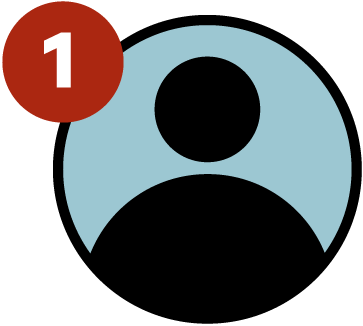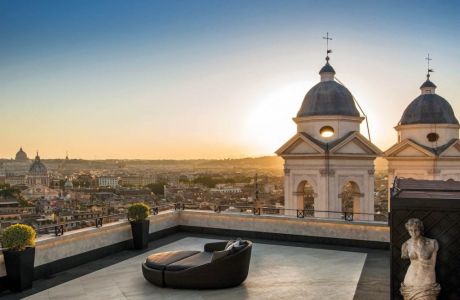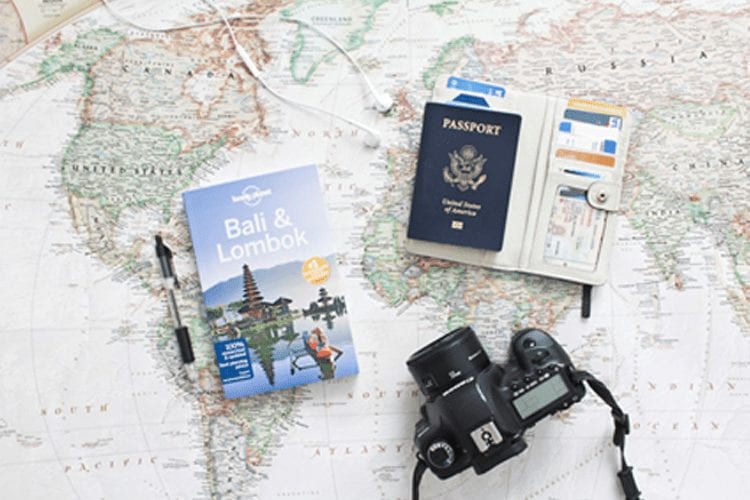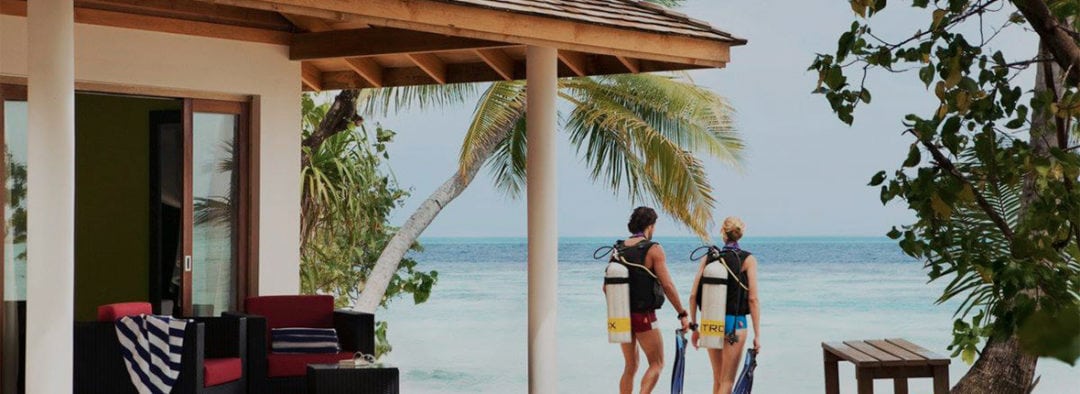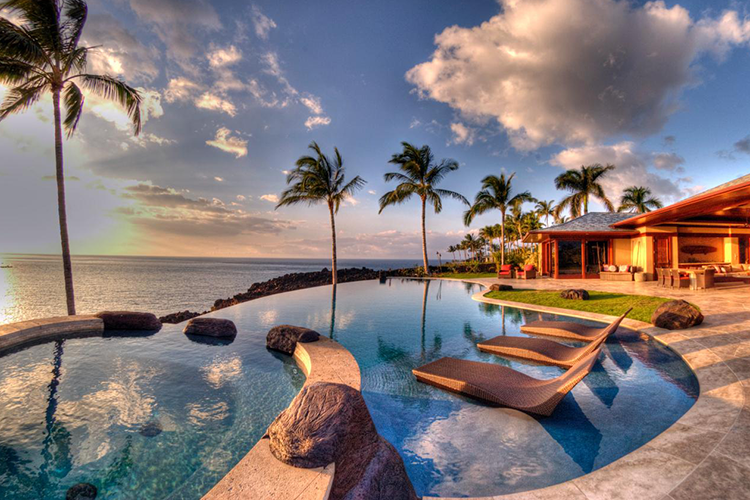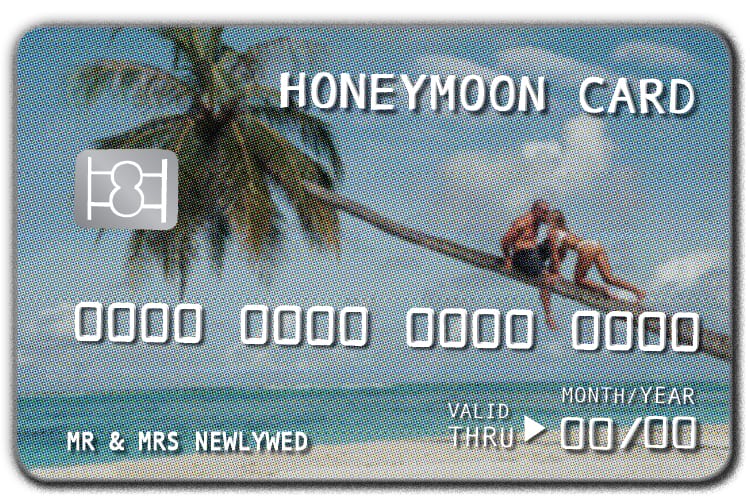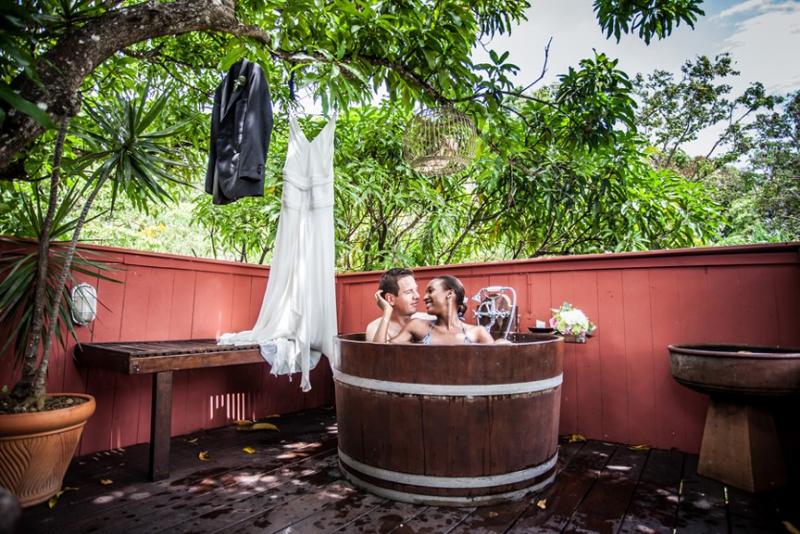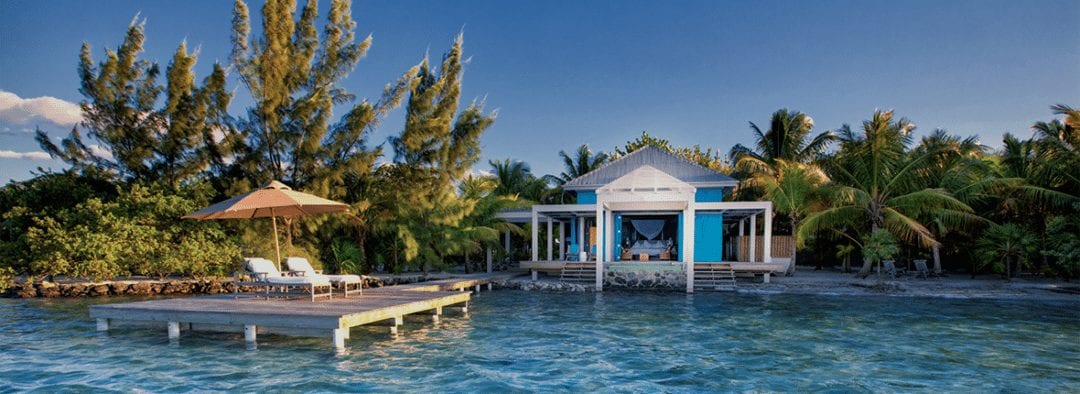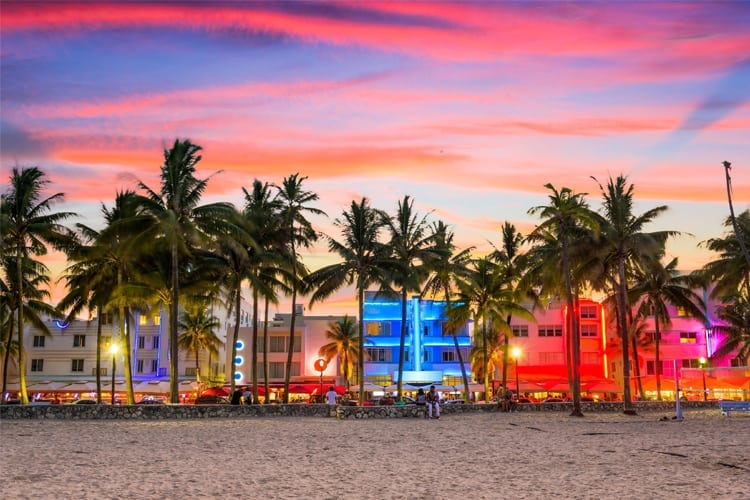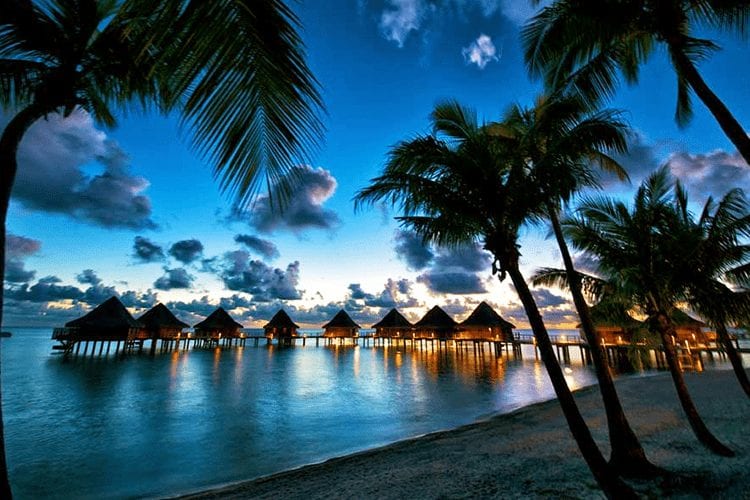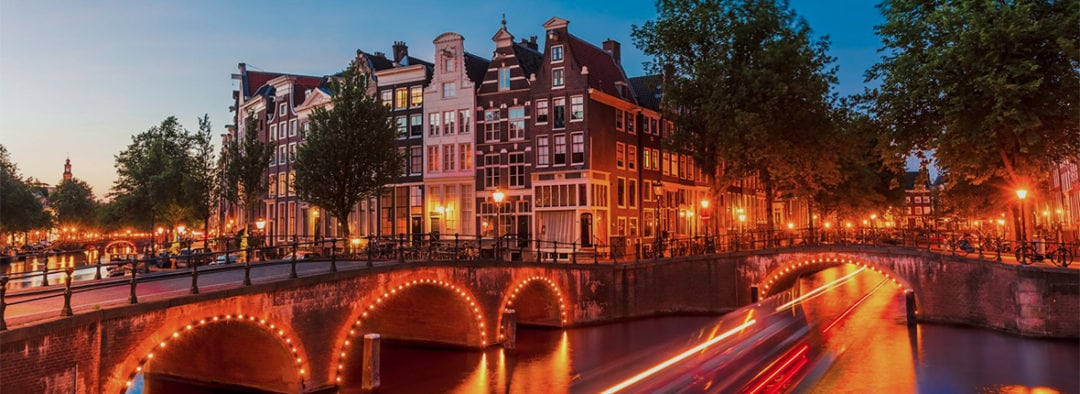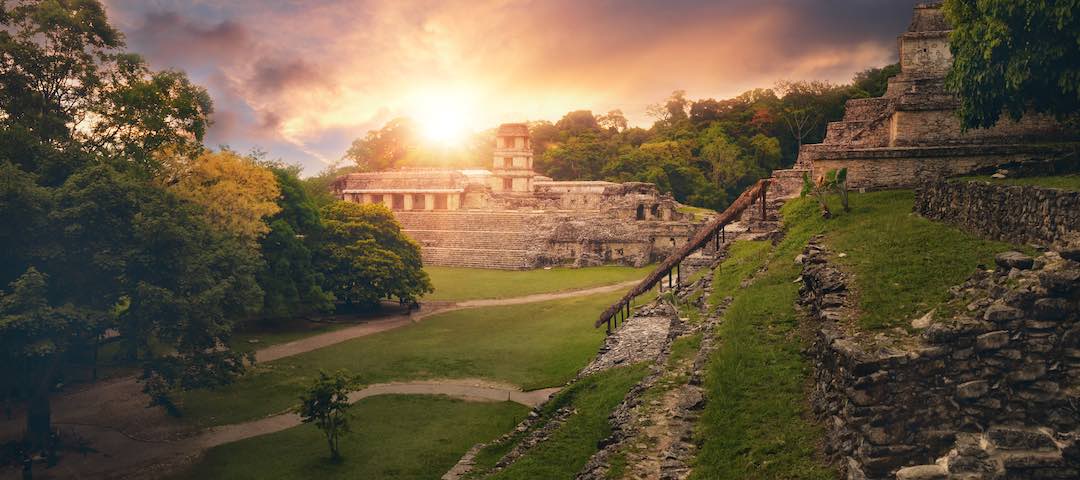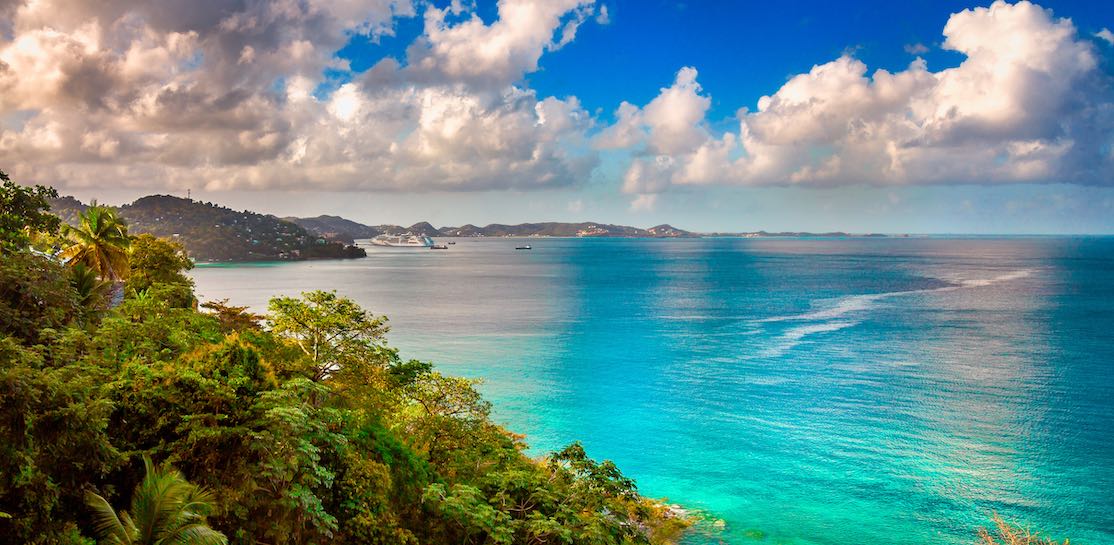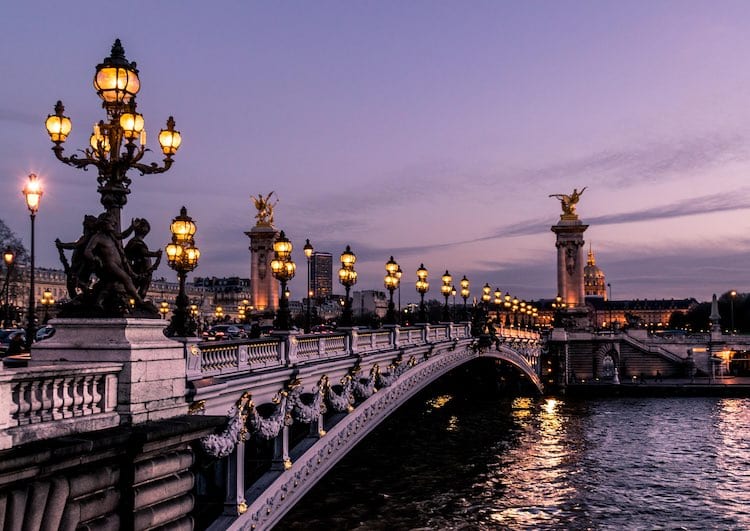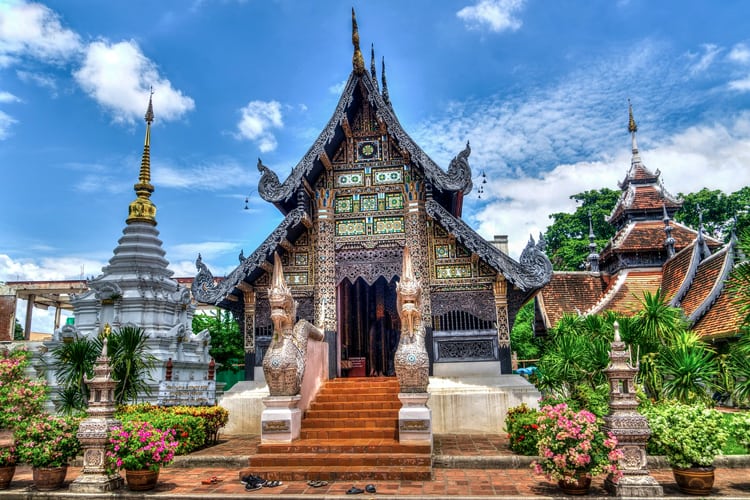
When you land at the airport in Bangkok, the sign says “Welcome to the Land of Smile.” It’s cheesy, sweet — and true. Thailand has been a tourist destination for ages because the food is cheap and delicious, the people are super polite, and the culture is totally unique. It’s a country that has everything: City, beach, and mountains. And in this Getaway Guide, we’re going to cover them all. You can choose, of course, if you want to hit just one on your honeymoon or if you want to be adventurous and hit all three.
Let’s start with…
The City: Bangkok
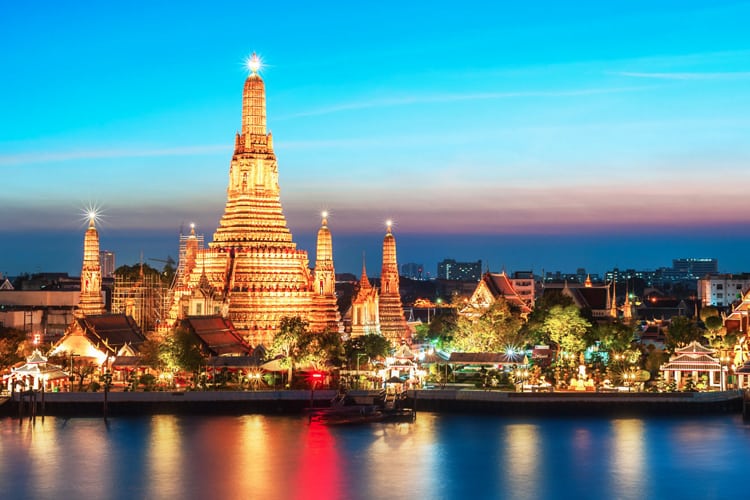
While Bangkok is more famous for activities that may be more suited to a bachelor or bachelorette party than to a honeymoon, there’s plenty of romance to be had in this bustling city.
When to Go:
Peak season for Bangkok is between November and March so that you can expect a lot of other tourists during those months, as well as higher prices for accommodation and airfare. The weather is cooler, with little rain. But even “cooler” may seem hot to Americans — the average temperature in the “coolest” month, December, is 79 degrees Fahrenheit.
March to May are the hottest months, with temperatures averaging 87 degrees Fahrenheit in April, while May to October is low season. During low season, you’re likely to find better deals, but also may have to deal with regular (sometimes monsoon-level) rain.
Where to Stay:
Bangkok is chock-full of hotels! And honeymooners often get special bonuses throughout Thailand, like champagne, spa visits, upgrades, or even a greeting with a jasmine garland — a symbol of honor in Thailand. Make sure you mention it’s your honeymoon when booking. Keep in mind that some hotels even require proof of a marriage certificate because the perks are so good.
Honeymooners in Bangkok often stay down by the Chao Phraya river. It were beautiful and lined with boutique hotels like The Siam, which offers both suites and villas, starting at around $600 per night. Cheaper accommodations include Airbnbs starting at $50 a night or J No 14, which is a good option for people who have aged out of hostels but aren’t quite at the luxury boutique hotel level yet.
What to See and Do:
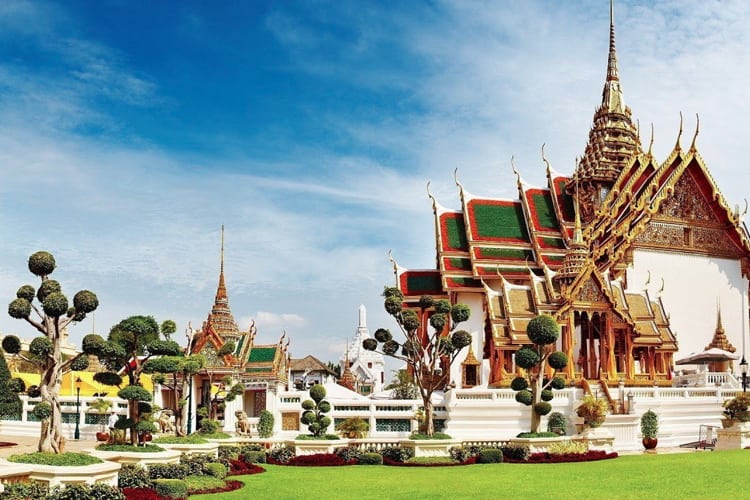
When you’re in Bangkok, you have to go to the Grand Palace. Thailand is the only country in Southeast Asia that was never colonized, and one of the reasons for that is they truly revere their King and the royal family. The Palace reflects that: everything is covered in gold, there are images and statues of gods and Buddhas, and the murals alone can keep you absorbed for hours.
The Grand Palace is a sacred site, so be sure to dress accordingly. Women should wear long skirts and make sure shoulders are covered. (They offer scarves and sarong for rent.) Men must wear long pants and long shirts. And no bare feet! While it’s certainly not fashionable, you’ll have to wear socks with your sandals.
Pro tip: Go very early — like right when the Palace opens at 8:30 AM — or very late — just before closing, which is at 3:30 PM — to beat the heat and the majority of tourists.
For people who like their travel to be a little gritty, check out Bangkok’s Chinatown. Bangkok is a city that’s known for street food (most of which is safe to eat), but the treats in Chinatown stand out for deliciousness and variety. Go at night for the full street food fair — and to avoid the heat.
On the flip side, Bangkok also has some spectacular malls. We know, We know — you didn’t go all the way to Thailand for a mall! And neither did I., But Bangkok is hot enough that they’ve created some seriously unique indoor spaces. Check out Terminal 21, which is a travel-themed mall. Each floor is a different city, including a Turkish souk, the shopping district of Tokyo, and even a replica Golden Gate Bridge.
Pro tip: Food courts in Thailand are cheap, clean, and a great way to sample a variety of food out of the heat and dirt of outdoor food markets.
Where to Eat:
Bangkok (and all of Thailand, really) is a foodie’s dream! In addition to Chinatown and mall food courts (and every single street corner), you can now find high-end dining in Bangkok. Locals love, love, love Bo.Lan, which offers gourmet takes on traditional Thai cuisine in peaceful space that feels like someone plopped a high-end country home right down in the hustle and bustle of Bangkok
Pro-tip: Go for lunch. It’s cheaper, and you still get the full experience.
Issaya Siamese Club is another great fine-dining option. The setting is a 100-year old villa and seating is available both inside and in their romantically garden. We’d recommend eating nothing else that day, though, because the amount of food on their tasting menu will split your Thai fisherman pants. Actual quote from eating there: “That amuse bouche was a bitch.”
And for a unique, totally Bangkok experience, take a cruise down the Chao Phraya with Supanniga Cruise. Take in the sunset with their Evening Cocktail Cruise or Evening Champagne Cruise, depending on your libation preference. Or if you want a full-on dinner cruise experience, go for the 6-course meal in the Sunset Dinner Cruise.
The Mountains: Chiang Mai
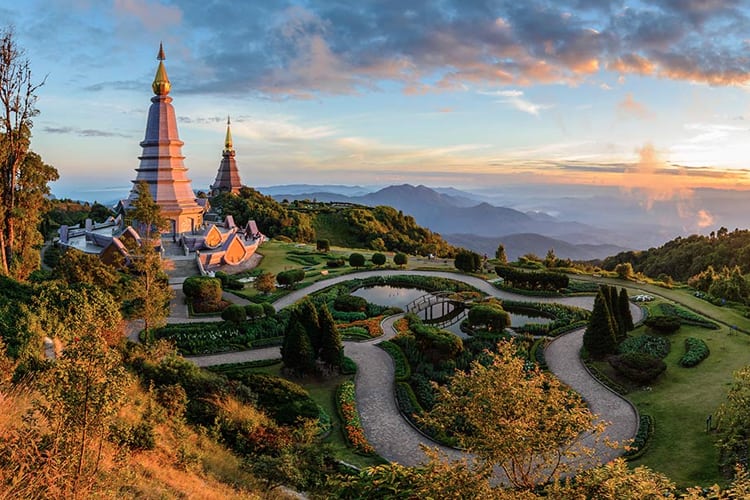
Chiang Mai is an ancient city that is the former capital of the kingdom of La Na. The Old City is surrounded by a moat and parts of the wall that encircled it is still standing today. It’s a great city for people who love history, Thai architecture, beautiful Buddhist temples, and exploring the surrounding countryside. Chiang Rai and Pai are two towns that you can easily and cheaply get to for a more rural Thai experience.
When to Go:
High season for Chiang Mai is November to February because the weather is temperate and there are a lot of festivals.
There’s a “burning season” in northern Thailand, which is a couple of months during which the farmers burn their fields. March and April are the worst months for burning season, and the temperature also gets pretty high during that time — up to 104 degrees Fahrenheit.
On the flip side, June through October sees heavy rain in northern Thailand, so you probably want to avoid Chiang Mai during those months as well. (Unless you like rain and are looking for fewer tourists, in which case this is the perfect time to visit!)
Where to Stay:
Visitors to Chiang Mai like to stay inside the walls of the Old City, with the area around Tha Pae Gate being the most popular. With its narrow, winding streets and a reconstructed part of the fortress wall, it’s one of the more picturesque parts of the city. It also gives you easy access to Chiang Mai’s famous Night Bazaar, and you can walk around the many temples inside the walls of the Old City.
But pretty much anywhere inside the Old City is going to be beautiful — and you have a lot of options for accommodations. Check out De Naga Hotel for a boutique, very Thai experience inside the city walls. If you’re looking for something a little calmer, venture outside the city walls to Aruntara Riverside Hotel, which is located about a six-minute taxi ride or a 30-minute walk southeast of Tha Pae Gate. Both places offer rooms for less than $90 (and sometimes as low as $65) per night.
And if you’re more the luxury hotel than boutique hotel type of couple, Le Meridien is well-located and still affordable by American standards. Rooms run around $170 a night, depending on the season, and the hotel restaurant serves one of the better Western high-end meals in town. But if you want to go all the way, take a look at The Dhara Dhevi Chiang Mai for the ultimate in Asian Luxury. This resort hotel is part of the Mandarin Oriental chain, and rooms start around $450 a night.
What to See and Do:
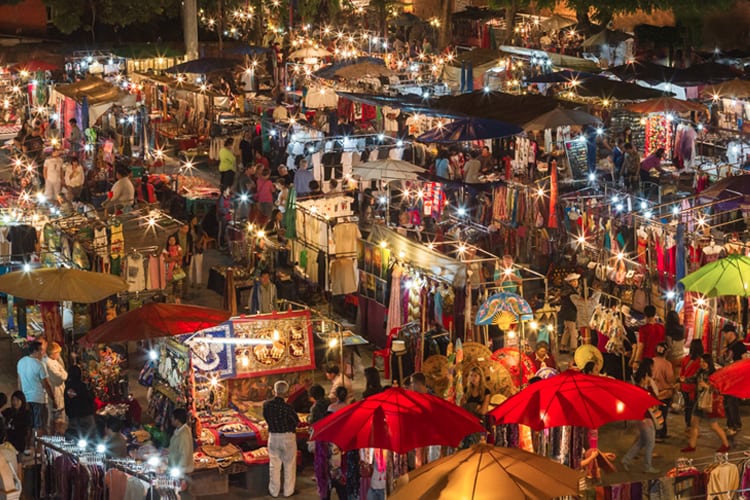
There are so many things to see in Chiang Mai that it’s hard to pick just a few! The Night Bazaar should be experienced at least once, but beware that the crowds are no joke. It’s a great place for people watching, street food, and the most random assortment of goods. The Night Bazaar starts at Tha Pae Gate and extends into the old city.
Pro tip: Don’t be scared to bargain! It’s expected at outdoor markets in Chiang Mai.
For a less touristy, more everyday Thai market experience, head over to Waroret Market in Chiang Mai’s Chinatown. It’s actually two connected markets that sell everything from dried goods to altar offerings to clothing to kitchenware to fruits and veggies and even live seafood! Get lost in the aisles and see how Thai people really shop. Don’t miss the basement food court for delicious, cheap eats.
Pro tip: One easy and cheap way to get around Chiang Mai is in the converted pickup trucks (different colors go different places, but you’ll usually want a red one inside the city), which are called “songthaews.” Hail one down anywhere in the city, say the name of the place you want to go (or show them on a map because let’s be real: Thai is a hard language), and if they nod yes, hop in the back and press the little button when you’re ready to get off!
Make sure the driver quotes you the price and if it’s over 30 baht and you’re going inside the bounds of the city, decline and wait for the next one. If they say no, just wait for the next one and ask again. And here’s a pro, pro tip: When you’re traveling inside the city, the price shouldn’t be more than 20 baht. Make sure to have the exact change in hand or the driver might “not have change.”
No trip to Chiang Mai would be complete without a visit to the elephants. But be warned: Not all elephant reserves are created equal. Avoid anywhere that lets people ride in chairs on the elephant’s back, as that does permanent damage to their spines. We recommend The Chang, which is actually a rehabilitation center for elephants run by a man who has been an elephant veterinarian for 25 years. Don’t be scared to call and make the appointment — they speak English. (Also they’ll ask for a deposit, which may seem sketchy but they’re legit.)
Pro tip: DON’T go visit the tigers, as tempting as it may be. They’re generally drugged and mistreated and who wants that kind of thing on their honeymoon?
Where to Eat:
As is the case pretty much anywhere in Thailand, you can’t go wrong with street food! There are street food markets that pop up as soon as the sun goes down and you’ll pay just a couple dollars per meal. Get a little adventurous and try something new, like fried insects, or stick to the dishes you know. (There’s no shame in eating Thai fried chicken and rice.)
When it comes to finer dining, don’t miss Dash Teak House, which is located in the Old City on a street so narrow that taxis have a hard time navigating it. The building is a traditional Thai teak house — you even take your shoes off if you’re eating in the upstairs area — and the food is an elevated version of dishes you’ll find throughout the region.
If you’re down to venture a little outside the city, head over to Nimman, which is a popular neighborhood for expats and foreigners. Get fancy drinks at Rise Rooftop Bar, which is on the roof of the boutique hotel Akyra Manor. Their sunset happy-hour is from 5:30 to 6:30 and drinks are half price.
Pro tip: If you’re looking for nightlife, Nimman is a great area for bars and clubs.
The Beach: Koh Lanta
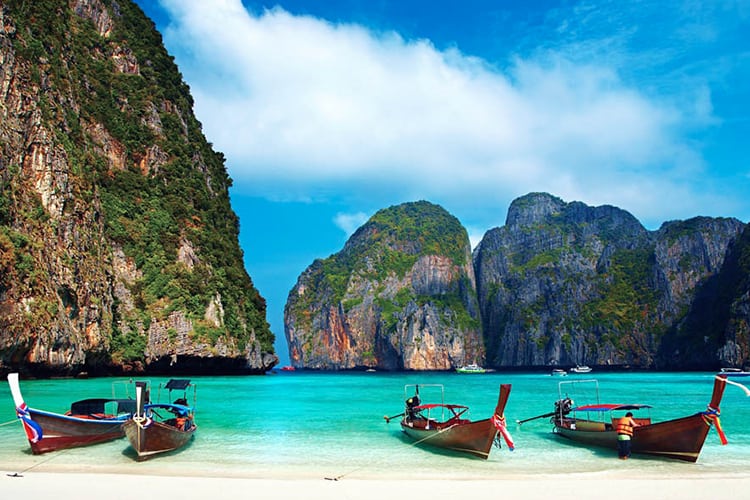
And of course, no honeymoon to Thailand would be complete without a trip to the beach. There are so many beaches in Thailand — the entire southern part of the country is a string of islands, after all — but one that you can count on to be beautiful and slightly less packed with tourists is Koh Lanta, which has 11 beaches to choose from. With its clear turquoise waters, Koh Lanta is the definition of paradise.
When to Go:
High season for Koh Lanta runs from October to April. However, rainy season is from May to October and, unlike other parts of Thailand, the rain only lasts for a couple of hours per day. If you’re down for a little time inside, you can enjoy Koh Lanta with fewer tourists and off-season prices.
Where to Stay:
For a more high-end experience, check out Andalay Boutique Hotel and Resort. The seaside hotel boasts a pool, spa, and package tours for exploring the area. If you’re interested in checking out how the locals live, rent a house on Airbnb in the fishing village of Lanta Old Town. It’s a cute little town with a few shops and restaurants, as well as a famous long pier jutting out into the ocean. And if you want to go really high end, book a few nights at Pimalai Resort and Spa, where rooms start at around $660 per night.
What to See and Do:
In addition to hanging out on the beach all day, Koh Lanta offers pretty much any exploring experience you can imagine. If you’re feeling adventurous, rent a scooter and drive yourself around the island. For the more tour-group oriented type, almost every hotel offers excursions including a driver, guide, and visits to some of the top locations.
Make sure to visit the monkeys at the National Park, go snorkeling on any of the beaches, and take a Thai cooking class.
Or spend all day napping on the beach. We won’t judge.
Where to Eat:
As you’re familiar with by now, you can’t beat Thai street food. But in Koh Lanta, it’s Thai street food and beach food! Hit up one of the many seafood shacks along the water for beach delicacies. Also, Koh Lanta used to be a trading stop off for Chinese and Muslim traders, so you’ll find an interesting variety of foods and spices on this island.
For that fancy, fancy we-just-married-and-are-so-in-love honeymoon dinner hit up the restaurants at Pimalai Resort and Spa. Seven Seas offers Western fine dining, while you can find upscale Thai food at Spice and Rice. Both restaurants offer stunning ocean views and service that can’t be beaten.
So there you have it: City, mountains, and beaches of Thailand, for a honeymoon you’ll never forget. With something for everyone and some of the best food in the world, Thailand is truly the ultimate honeymoon destination.
Thailand is a magical country full of tons of different cultural fares, and, more importantly, culinary delights.

